
GALLERY
ABOUT US
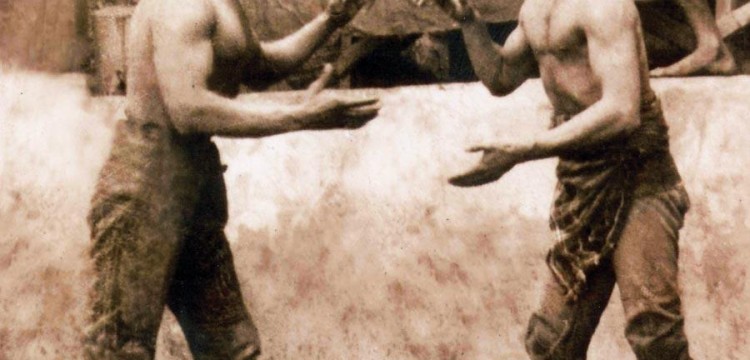
There are six conditions for intervening among the people of fatwat, which are: 1- The teacher must know and express this kind of work. 2- To force the child to serve for forty days. 3- He should present water and salt in the assembly (salt for growing salt and water to show that it is pure). 4- Light a tallow burner with five wicks. 5- Tie the child's middle to the condition. >
Mitra Nazimi, Information magazine of wisdom and knowledge: Fatut or chivalry is a current that is rooted in ancient religious beliefs and moral character of Iranians. It seems that the origin of this current can be found in the ancient thoughts of Iran. , the Zoroastrian religion, has had many ups and downs during its lifetime: from tyranny and banditry to the interactions between guilds and professions It mixes and many of the people of Fazl and think about it, fatwat enters a new stage, at this time, banditry, theft, etc. give way to good moral values. With the success of Nasser Khalifa Abbasi, the nobles become the guise of fatwat, and fatwat has formal organizations and regulations. After the weakening of the caliphate, fatwat returns to its original position, i.e. the guilds and groups of people.
Providing a comprehensive definition and preventing fatwat is not very useful. It is not easy, because this concept or current, from the beginning of its emergence among different strata to its connection with Sufism and other branches of Aiyari and chivalry, has had its own mechanism and requirements in each period, and therefore they have given a special definition to it. In terms of the term, Fatut is a special way, custom and ritual that has been popular among Iranians for centuries, even before Islam, and special social institutions to support and promote It has emerged. If we are looking for a definition of fatwat, we should go to the written heritage of Sufi about this, although the definitions of fatwat are very wide and varied like the definitions given for Sufism. Bari, the oldest work in which a definition of fatwat can be found is the book "Al-Fatwa". Muhammad bin Abi al-Makaram known as Ibn Memar Hanbali It is Baghdadi. He says in this book: But in the Sunnah, there are reports about Fatwat, and the most selected of them is that Imam Jafar Sadiq (a.s.) narrated it from his father and finally from his grandfather, and he said that the Messenger of God P.S.) said that the chivalry of my nation has ten signs. They said, O Messenger of God, what are those signs? He said: Truthfulness and faithfulness to one's promise, paying trust, giving up lying, forgiving the orphan, taking care of the beggar, giving what has been received, and doing many favors, and calling guests and their companions is modesty. . It is the work of the element of Kikavus bin Iskandar bin Qaboos. The author of this work, in chapter 44, which deals with the ritual of chivalry, defines this term: "...They have said that the principle of chivalry is three things: one is to do whatever you say, and the other is not to speak against the truth, and the third is to use patience. Because the attribute that belongs to chivalry is under it three things (Muhammad Jafar Mahjoub, Introduction to Fatut Namah Soltani, p. 16)
It makes the point of researching it difficult. The relationship between Ahl al-Fatut and artisan guilds has not been to keep different guilds separate from each other, but rather to create a connection between different guilds. Zarreen Koob says that Abu Jaafar Yazdaniyar narrates in the thirty-seventh chapter of Rouza al-Muridin that they asked a Sufi, "Who is Fati?" He said, "One who has neither contention in his inner self, nor in his outward appearance, pretense and hypocrisy, so that he is not aware of the head that God is between him and his own chest, so that he can reach the creation." It is said that when Abu Hafs Nishaburi went to Iraq, there was a discussion about Fatut in a meeting where Junaid and other Iraqi Sufis were present. When Abu Hafs said that fatwat consists of giving justice and not wanting justice, Junaid told his companions to get up. That is, in Fatut. The story of chivalry is narrated in this way: At that time, when the sheikh was in Neishabur, he took a bath. A dervish would serve him and put his hand on the Sheikh's arm, and he would collect the shukh from the Sheikh's back on his arm, as is his custom, so that the person could see. Shaykh said: Don't bring a witty man in front of him. Those present should be fair that no one has said anything better than this in this sense (Secrets of Tawheed, edited by Dr. Zubihullah Safa, p. 280). The levels of religious knowledge in mysticism and Sufism have been considered three levels in different texts: Sharia, Tariqat, and Truth. Najm al-Din Zarkoub, in his letter Fatut, considers fatut to be the key to entering these three stages (Iranika, Mohsen Zakari, Tzaal Jawanmardi).
The writers of Sufi books have mentioned the conversation of Imam Sadiq (a.s.) with Shaqiq Balkhi, in which the meaning of fatut is best seen: They say that Shaqiq Balkhi told Jafar bin Muhammad al-Sadiq about fatut He asked, Fara Shaqiq said: What are you saying? He said: If dLet us thank India and wait if they prohibit us. Jafar said: Our Madina dogs should do the same. Shaqiq said: O son of the Messenger of God, what is your fatwa? He said, "If they give, we should sacrifice, if they don't, we should be grateful." Sometimes, fatwat means the fulfillment of Crimean morals, good qualities, bravery, and self-sacrifice, as one of the young men wrote to Mahlab bin Abi Safra::
Alfati If you are honest in your speech, then you will be a perfect gentleman (Damadi, Kitab al-Adab Damadi, p. 44)
The author of the book "Nafais al-Funun fi Arais al-Ayoun", Shams al-Din Muhammad bin Mahmoud Amoli, one of the scholars of the 8th century, considers fatwat to be the fifth art of Sufism and in its definition he says: the fifth art One of the mystic sciences is the science of enlightenment, which is the knowledge of the quality of the emergence of the light of human nature and its control over the darkness of the soul, so that the virtues of the creatures become queens with secrets and the vices are completely rejected (Damadi, Kitab al-Adab, p. 157). have discussed it. In the meantime, it may be possible to divide the multitude of these opinions into two general categories: the group who consider the origin of Fatut to be Iran, especially Iran before Islam, and the group who are looking for a religious and especially Islamic source. They are for this flow.
Malik al-Shaarai Bahar considers the beginning of chivalry in Iran and specifically among the horsemen of the ancient era and the Achaemenid period. These captives were scattered in the states of Iran, and seven families of them have been the most famous, and each family in a state has been the head of that state. On the other hand, these horsemen had to have several characteristics, such as having a family, having their name registered in the state court, being brave and honest, and possessing the skills of a horse, and perhaps most importantly, being a gentleman. Carbon of Chivalry, pp. 109-110). Saeed Nafisi also considers the beginning of this flow from aspects of the social history of Iran before Islam, according to his belief, the entry of Manichaean beliefs into this flow is proof of this claim. Meanwhile, in the middle of the second century of Hijri that the Iranians in every corner, especially in the east of Iran and mostly in Sistan and Khorasan, rose up against the riots and racial prejudice of the Umayyads and vassals in Iran. The guides of this national movement were mostly young men; The greatest leader of this group was Abul Muslim Khorasani (2nd century) who was killed by the Abbasid caliph (Nafisi, Essay on Fatut and important books related to it, Farhang Iran Zameen Magazine, Volume 10, Vol. 1-4, 1341, quoted by Carbone , ritual of chivalry, p. 149). Another reason given for attributing the beginning of Fatut to Iranians is that they wear special pants called Sarwal in their morals and professions, especially in order to honor Fatut, which was the special clothing of Iranians and Asian warriors and especially Iranians. And this type of covering has not been popular among Arabs. Ayyani Ritual, Sokhn Magazine, Volume 19, Vol. 1-6, 1348, quoted by Karbon, Javanmardi Ritual, pp. 167 and 169). European researchers, including Franz Tischner, consider the origin of fatut to be the associations and unions of the late Old Testament and the Eastern Roman cities (Frantz Tischner, Fatut article in Islamic countries, Journal of the Faculty of Literature, Volume 4, Vol. ). Mehrdad Bahar considers it illogical to attribute Iran's Pahlavi religion to Yaqub and Adam Abul Bashir, who were Semitic and Jewish characters, but he believes that the mercurial and slippery nature of myths and rituals has caused that in various myths and works, characters Zoroastrian heaven and earth get Islamic color and name, and some historical monuments of ancient Iran get the name of Suleiman's mother's grave or his throne. And therefore, it is not without reason that this ancient sport in the Islamic period was related to myths and semi-mythical - semi-historical figures of Jews and Islam. Therefore, according to He should look for the origin of Fatut in the history of Iran's heroic history and the legends related to knights and knights, and not in the sources of the Old Testament and Roman and Greek myths (Mehrdad Bahar, History of Chivalry in Ancient Iran, Introduction to the book Cultural & Social Survey of Zorkhanehs Tehran, High Council of Culture and Arts, 1355, quoted by Karbon, Iyan Jawanmardi, pp. 192-3).
But Some sources and researchers, especially those who are tied to Zulfi Sufism, are looking for a religious, Quranic and generally Islamic root for fatwat. Ibn Rasouli (half of the 5th century), who has a treatise on fatwat, considers this trend as the legacy of the prophets and imams and says that since the time of Prophet Adam, the religion of fatwat was found in the world, and Adam rose up to assert the right, and when his term came to an end He came and bequeathed it to Nabi Seth, and then it was transferred to Noah, and from Noah to Sam, until Khalilur Rahman Ibrahim appeared, and Abraham's fatwat was specified in the Qur'an. Then, during the time of Moses, what was hidden from chivalry was revealed and Moses told it to Harun, and after that fatut appeared in Christ and finally reached the Holy Prophet.D. (Mohammed Jafar Mahjoub, chivalry and its ritual, Louisen, the legacy of Sufism, p. 308) Nasser Sivasi, in his poems Fatut Namah, expresses the attribution of Fatut to Adam (PBUH) in the form of a poem as follows : It came down from heaven to this world
Cry day and night, it has returned now His guilt was three hundred and sixty years.
His cry was to give justice to him. That fog and the water of the eyes are like the atmosphere
So let him be your fat in the world There was so much justice at that time
(Fetutnameh of poems by Nasser Sivasi, Farhang Iran Zameen, vol. 10, p. 240, quoted by Niromand, Karim, p. 165). Carbone divides Islam into two rings of prophethood and guardianship in the introduction to the book of Chivalry. He believes that the circle of guardianship comes after the circle of prophethood and the comprehensive fatwat of both of these is the foundation of Hazrat Ibrahim Khalil, its pole is Imam Ali (a.s.) and its seal is Hazrat Hojjat (a.s.) )
Bari, Ebrahim Khalil Talaiyedar has considered the message of Tawheed monotheistic religions to be the head of the Fatian chain and the flow of fatut, of course, according to the Qur'an, and they have given him the title of Abu al-Fatian. Young men believe that Hazrat Ibrahim was the first one who established the rule of feasting and vowed not to eat without guests, and he laid the basis of Marwat, and with the force of fatwa, he slaughtered his own son and renounced the world and its pleasures, his family, and the sweets of life. He turned and suffered on the way to fight against the tellers and the deceivers and broke the idols and remained steadfast in every kind of trouble and hardship and God said about him in Surah Anbiya verse 60: "Qalwa Samina Fati Yazkarham Yaqal Le Ibrahim" (Niromand, p. 166). About the aspect of self-sacrifice in Ibrahim's Fatut, it has been narrated that at the end of Ibrahim's life, when he had a lot of wealth, Gabriel asked the Holy Prophet, "O Lord, where did Abraham get the khalat khalat with so many wealth and wealth?" God said: Although he has a lot of wealth, his heart is with us, and if you want, try it. Gabriel came to Abraham and said, Glory be to the Lord of angels and souls. Ibrahim said: May my life be sacrificed for my friend, tell me again. Jibraeel said: Give me a third of what is yours and I will tell you. And Brahim gave him a third of everything he had. Gabriel recited these words to him once more, and this time Ibrahim said, "Sacrifice my life, my friend, tell me again that I will give you everything I have." There are two circles or two circles, the circle of prophecy, which includes from Adam to Khatam (PBUH), and the circle of Wilayat, which Ali (AS) is the beginning of and Hazrat Qaim is the finalizer and manifestation of it in the end of time. The Fati Shiites, like the Sufis of Wilayat Madar, who attribute their robes to the pious master, owe all of their courage and bravery to Haider Karar. And their various sources have been praised with attributes such as the source of Ain Fatut, the pole of Fatut, the mine of jade and mort (Riyaz, Fatut Nameh, p. 30). From the point of view of Fatut, the mission of the prophets from the era of Abraham is like the service of chivalry; That is, Hazrat Ibrahim is an example of Fati and Imam Ali (a.s.) is a perfect example of a knight (Karban, The Religion of Chivalry, p. 8). The authors have mentioned various evidences and events to prove that Ali (a.s.) is the head of the fatwat dynasty: Hazrat Ali (a.s.) risked his life several times to protect the Holy Prophet (s.a.w.), including that night in The Prophet slept on his bed so that he could travel from Mecca to Medina in good health. The other one was a poor man whom Ali (a.s.) entertained, and since he had nothing but two loaves of bread at home, he took it from himself and his family and put it in the mouth of that poor man, who was a clear example of his self-sacrifice. In the Qur'an, in one of these three verses (=207 Baqarah, 9 Hashr, and 8 and 9 Dahr), this event and the sacrifice of the pious master have been mentioned. It is said in the news that the Prophet (PBUH) was sitting with a group of people who heard about the corruption of a man and a woman in the house. The Prophet told Ali (PBUH) to go and investigate... When he returned, he asked the Prophet of God, O Messenger of God. By Allah, I went around that house and did not see anyone there. Meanwhile, the Prophet (PBUH) said: O Ali, you are the best of this nation. (Damadi, Tohfa Al-Akhwan, pp. 12-13). Nicholson quoted from the book Al-Fatwa by Ibn Memar Hanbali al-Baghdadi He says: In the battle of Uhud, when Hazrat Ali gave courage and fought in the cause of Allah, Hatif Ghibi sang La Fati ila Ali La Saif ila Zulfikar, and Hazrat Rasool said this sentence to Ali (a.s.) several times, and this became Fatian's slogan. (Vahid Magazine, vol. 7, p. 618, 1347) What makes fatut difficult is that this trend has several layers, in the sense that it includes a range of religious, secular, moral, practical and political meanings and applications that one or more of its meanings have occurred at any point in time. and therefore it has made it difficult to understand its true nature. In the Qur'an and the hadiths and narrations that are narrated from the Messenger of God and the Companions about fatwat, the religious and spiritual aspect of fatwat is prominent, but in the beginning of the second century, features gradually entered this trend that have nothing to do with religious teachings, as they did at the same time. There have been some Fatians in Syria and Iraq who were people of gambling, wine and wealth. In the third century, these people reached a place where they were not afraid of any corruption and vandalism and even corruption. The theft and looting of people's property, especially the rich, became common among the people of this movement from the 4th centuryThey had Navan Shatir and Ayar on them. And they had a lot of influence in the removal and installation of emirs and rulers. In the 6th and 7th centuries, with the rise of Caliph Nasir Sahib, the organization became more complex and took on an official and ceremonial state. Due to the corruption, corruption and unrestrainedness of Fethian in the angles and anchors, this stream gradually declines from the 8th century onwards until the Safavid era, which is basically limited to an area like Zorkhaneh, and what we see today is an ancient sport. And Pahlavi and some of the moral principles of Loti are the origin of the so-called Dash Mashdi. ;
Objective signs of Fatut
The people of Fatut had objective signs that distinguished them among the people. And each of these signs has been indicative. Among them are: drinking a glass of wine (which was changed to water and salt after Islam), special pants (pants), lighting a lamp with five wicks, a special hat, wearing a shad. His place of residence is also known as Zawiya and Langar.
But drinking a cup refers to knowledge and wisdom, which according to the purity of the first talent and the history of eternal care, a person have been forgiven and the power of accepting it has been placed in him so that it may appear on him through the grace of a perfect soul and come into action and become the cause of his true life, just as the life of hearts is to knowledge as the life of bodies is to water...salt. It is the quality of justice, which is the perfection of moral virtues, just as the health and strength of the body were not only the virtues of morals, and no creature should endure but justice, just as the health and strength of the body were not other than all kinds of food, and no food is good or tasty except for Salt. (Riyadh, Fatut Nameh, pp. 70-69) .
The use of water and salt can also be a reference to the fact that the people of Fatut should be like clear water. and have the right to salt. Qazi Shahab al-Din in Tarikh Muzafari about the custom of drinking water and salt for young men and its secret says: Drinking water is because water is the essence of life and the source of its consistency and strength, and water cleanses all impurities and filth. "LTR". The state and stability of a young man's step in his religion and not returning from it, as well as water, is sweet and pleasant, and saltiness is anti-palatable and a cause of unpleasantness in water, and mixing salt with water indicates that a young man should face hard and loose and ups and downs. Life should be patient and endure calamity and be grateful for the blessings of the Almighty and bear the burden of your friend in any case (Muhammad Jafar Mahjoub, Fatut Namah Soltani, introduction, p. 48; Iyen Jawanmardi, p. 123). ; And it is forbidden to escape from lust. A gentleman is a perfect man; As the Prophet gave this title to Ali (A.S.). The lamp with five wicks is a symbol of the lamp of the heart, which must be lit for the love of the five people of Al-Abba (Ayin Jawanmardi, p. 123).. > Sheikh Abu Abdullah Muhammad bin Abi al-Makaram, known as Ibn Mimar Hanbali Baghdadi, who is apparently attributed to him in the oldest al-Fatwa book, says in his book:... And he said that the Messenger of God (PBUH) said that the young men of my Ummah are ten signs. They said, O Messenger of God, what are those signs? He said: Truthfulness and faithfulness to one's vows and giving of trust and abandoning lying and forgiving the orphan and arresting the beggar and giving away what is due and doing many favors and inviting guests and honoring all of them are modesty. > Sources, Ashraf have considered the characteristics and characteristics of Fethian to be loyal, truthful to promises; It is for this reason that God Almighty praised them and praised the prophets with it: "I am al-mo'minin men, men of charity, we are loyal to God" (23/Ahzab) and he said in the description of Ishmael: "He is not sincere about the promise" (54/ Maryam). Amir al-Mu'minin Ali (a.s.) in mentioning the principles of fatwat, faithfulness, which is the last virtue, is the first of all, and repentance, which is the first, is delayed, regardless of whether the pole is viewed from the position of perfection and descends from the highest level, and the path leading to completion is the opposite of the path of the beginner. May it be in perfection, so according to the order, the first is loyalty, and the last is repentance, and according to the order of this repentance, and the last is loyalty (Damadi, Tohfa Al-Akhwan, p. 60) .
The letters have brought the generalities in such a way that after acquiring knowledge, one should get used to the qualities that the elders considered to be seventy-two, as follows: truthfulness, thinking of evil, help, freedom from the shackles of the self, being pure. eyes and skirts, loyalty, forgiving friends and enemies, wanting for others what they want for themselves, putting their lives and hearts on the path of someone who has cut a seal, not learning to speak evil, considering oneself less than a Moor in strength, Fulfilling the wishes of the unwilling, not saying anything and doing what is possible, giving satisfaction in anger, not being angry, not being self-indulgent, tolerance, giving bread, having one language and heart and being one behind and in front, not doing what you see and Don't listen, don't be impatient, follow a pious path, don't cheat, keep your heart free of grudges, go to a place where you will be called even if you fear for your life, keep your nose free of pride, be humble, stay away from arrogance, speak soft andGentle and fresh and as much as talking, not telling the secret of the heart to anyone, not being jealous, not coveting children, obeying whatever they say even if they both put their heads on it, I did not follow the path of Merut, practicing austerity, Instead of not going to a place, looking at a friend with the eyes of lust, not being biased, not being self-righteous and not taking a single step to one's own satisfaction, not liking the people of the time, not loving except generous people, being tolerant of the old and forgiving the young, with a friend. And the enemy is not to brag, to make noise and arrest, not to be proud of oneself, to be polite, to serve, to be dignified, if there is blood, to cover it up, not to mention anyone's name except for evil, not to surround oneself with rebellion, air of self. Breaking oneself, educating young and old in such a way that they are not ashamed, advice on hiding, not insulting one's clothes, raising everyone as a child, being content, trying to obey and being religious, worshiping God and old And to be obedient, to walk in the path of nothingness, to be patient, to thank God for his blessings, to be patient in hardships, to be with a sweet-speaking guest, to remove burdens and bring forward whatever it is, to hold hearts with kindness and mercy. Bringing, being agile in the way of kindness, not waiting for gratitude, burning like a candle in the midst of a crowd, being patient with love, having words with honest deeds. Nafisi, Sarcheshme Suf, pp. 138-9) .
Different classes of Fethian
George Zidan divides the inhabitants of the cities in the first centuries of Islam into two The group divides. The first group are industrialists, merchants, and craftsmen, and the second group are people who lived by stealing, banditry, and stabbing. In the meantime, the Zaaran of Beirut can be considered as part of the second group and a small example of the Ayars of that day in Baghdad. This second group was known by several categories and titles: Ayars, Shatarans, Zawakils, Saaliks, etc. (History of Islamic Civilization, Jerji Zidan, translated by the late Javaher Kalam, p.57)
The intellectual and social dimension of Fatut
Fatut as an ideology and a way of life has evolved in two stages: one is the intellectual stage that is related to the life of Arabs The old returns. Meanwhile, the intellectual aspect is not the abstract concept of fatut, because this concept is not seen in the Arab literature of the early eras, but rather the semantic application of this concept among the Arabs. According to the ancient Arabs, Fati is the pinnacle of human perfection, which was manifested in the two qualities of courage and generosity. And whoever exaggerates more in these two attributes, it was thought that he is more chivalrous. The example of Hatem Taei in history is a proof of this claim. In bravery, in the later periods of Hazrat Ali (a.s.), he is considered a perfect example of a fati, as Hatif Ghaibi said: "Lafti ila Ali la Saif ila Zulfikar".
On the other hand, this aspect of fatut later, that is, when it interacts with Sufism, takes on another meaning, which is self-sacrifice. Sacrifice means that a person always prefers others over himself. This self-sacrifice later becomes the basis of the work of the method of blame. The meaning of fattut is more fattened by the Sufis, so that it is a sum of virtues that surpasses even the ancient Arabs' perception of a complete fatti. In terms of definition, it can be said that social Fatut is the work done by Fethians for the improvement and well-being of the common people and to arrest the oppressed and the needy in front of oppressors and oppressors. (Futut Nameh, p. 72) >. Various reasons can be mentioned in this regard: one is the ceremony for entering the Fatut circle, which consists of giving Fatwa clothes, the main part of which is pants for Fatut, because pants are specific to those Asian tribes whose customs and traditions include horse riding. is considered. Pants have been common in Iran at least since the Achaemenid period. The other is good manners, honor, honesty, truthfulness, and refraining from adultery and adultery.
Another reason is the oath of fatut, when Fatti took an oath, he was faithful to his oath. Was. The fourth is stubborn opposition to authoritarian governments: Fetians always fought against the oppressive actions of governments, and on the other hand, they had an independent organization called Awaniyeh, which even decided to kill the tyrannical ruler. Jawanmardi, pp. 135 onwards). From a social point of view, the flow of fatut includes a wide range of activities; From warfare and bravery, theft, night raids and looting of the rich's property to hospitality, supporting the oppressed and rising against the oppressor, and even craftsmanship.
Overall, from a social point of view, it can be said that young men represent the principles, human values, ethics, right and justice, who wanted to change the shape of the society in the shadow of some kind of intellectual transformation and moral transformation. These wishes and ideals have always been respected, even if many of them have not been implemented, the necessity of their presence has always been felt. Because of the constructive service they have done in the social field for a large part of the people, they have been brave fighters who, in order to achieve justice, right, reason, brotherhood, order, and law, their votes with order and management and with Patience and resistance have borne fruit and they have been willing to bring unity and courage to Iran. and granted the forgotten self-confidence to Iranians and become a symbol of stability and a symbol of social order. , the opinions, rules, and manners of the young men are written. Fatot-namehs form a significant part of Iranian folk literature and represent the culture of Mer peopleIn the days gone by, many of the great Sufis wrote books in Arabic and Persian prose and prose. (Hakmi, p. 124) He had a special fatwa letter for himself (Ayin Jawanmardi, p. 9). Abu Abd al-Rahman Muhammad bin Hasan Neishaburi (412 AD) has an independent treatise called Kitab al-Fatwa. Ibn Memar al-Baghdadi's Fatwa book (642 AD) and Kamal al-Din Abd al-Razzaq Kashani's Tohfa al-Fatwa (730 AD) are among the fatwa letters in Arabic.
But in addition to fatwa letters In Arabic, several fatut names have also been written in Persian, the most important of which are as follows: Fatut names of Najm al-Din Abu Bakr Tabrizi known as Najm al-Din Zarkub (712 AD); Alaa al-Dawlah Semnani's fatut letter (736 AD); Fatut letter of Amir Seyyed Ali Hamdani (756 AD); Soltani's fatut name by Mullah Hossein Kashfi (1910) .
Fatut name of Attar, including eighty-two verses by Farid al-Din Attar and another fatut name containing 689 verses by a poet known as Naseri is also one of the fatut letters of Manzoom. It has been said that most of the letters because Their authors were not eloquent and eloquent, they wrote their messages in vernacular, therefore some of them contain incorrect and broken words and expressions. (Afshari, pp. 2-3)
It seems that the most valuable and The most interesting fatoot-namehs are guild fatoot-namehs. These chivalrous letters, in addition to teaching chivalry to their readers, also familiarize them with the customs and ideas of the past craftsmen of Islamic lands: Chit's fatoot-nameh Makers, ironsmiths, salmanians, soqayans, The fatut names of Kasab, Tabakhan, etc. are among these types of fatut names. (Afshari, pp. 45 onwards) The first century, gathers all the principles of fatwat in this verse of the Qur'an which says: God commands justice and goodness and respect for close relatives and refraining from evil, oppression and disobedience (90/Nahl). , p. 159)
Carbon has listed nine principles in chivalry as the principles of chivalry, which are: confidentiality, truthfulness, helping the needy, chastity, sacrifice, lack of need, friend of friend and enemy of enemy, fraternity and Adoption sister, Sogand Ayaran
As soon as someone joins the ranks of the Ayars or joins their service, he must take an oath not to betray and not to think, and to be of one heart and to be friends with their friends and enemies with their enemies, and without interpretation. (that is, with no interpretation or excuse) do not betray. Beloveds swear to each other to be friends and to be friends and not to be jealous of each other's lives and not to be scheming and treacherous.
from Imam Ali (PBUH) is reported to have said: There are four pillars of fatwat: forgiving with ability, patience when angry, and good thinking with enmity, and self-sacrifice despite needing to be effective. /> Omar Suhravardi considered the pillars of Fatut to be twelve; Six external pillars and six internal pillars. The six pillars of appearance are the belt of the pants (allusion to purity from adultery), the belt of the stomach (avoidance of forbidden food), the belt of the tongue (avoidance of backsliding), the band of hearing and sight (avoidance of what should not be seen and heard), the band of hands and feet (irony). that he does not hurt anyone and does not step into grief) and the bond of greed (destroy greed in himself).
But the six pillars of inner life are : Generosity (giving without question with good intentions), Karma (giving without regrets), Humility (being humble), Forgiveness (not being satisfied with hurting anyone), Nisti (being empty of semen), and Consciousness (in the position of connection) And he should be aware of nearness and guidance. He considers it as having ten levels and four pillars; he says: and there are ten degrees of fatwat: Satanic fatwat in the levels of hijab, and human fatwat, property fatwat, prophetic fatwat, spiritual fatwat, and intellectual fatwat, attribute fatwat, And the fatut of a face is of the rank of "the whole thing is destroyed except for a face".
Finally, for each of the forty pillars of fatut, which is the result of multiplying the degrees in certain pillars it can be done, he counts ten conditions and considers the total conditions of the pillars of fattut to be four hundred conditions.
The fourth chapter of Raseel Jawanmardan lists the conditions of fatut under seven items, which we mention briefly due to their importance: First of all, women are not allowed to enter this circle. Second, maturity, because it is the origin of the emergence of reason and the departure of property power from power to action. Third Reason, because it is the servant's intermediary to the truth and reaching perfection. Fourthly, what is religion, Fatut is the perfection of religion, and the perfection of anything that is branched from its principle can be, and a branch without a link is impossible. Fifth, the correctness of the intention and the persistence of the facial condition on a face that does not have a gross reason that contradicts virtue. The sixth is Marwat, and it is one of the essentials of the nature. If the nature is purified from carnal desires and physical interests, it becomes free from anger and lust due to the light of the nature... and it becomes aware of the Alavi intentions... and this is the meaning of the same fattut. It is based on the truth of a man and woman. And the seventh is modesty, and that is the reason for the decency of the essence of the soul from fear. Issuing bad things from him and this meaning indicates the strength of the distinction between good and bad thingsThe Prophet (peace be upon him) said: "Al-Hiya man al-Iman" (Mortaza Saraf, Rasa'il Jawanmardan, pp. 71-63)
Naseri fatwa, political fatwa
after the rise of Islam , Ayari appeared in general and mass movements of Iranians against the Arab domination, and the reason was that the Arab rulers and agents of the Abbasid Caliphate called Iran's brave and patriotic Ayaris "foreigners". nicknamed And they added the word "foreigner" after each ayat of Fati that was issued to them. For example, Ammar al-Qarihi, Yaqub Leith Safar al-Qarihi, Saleh bin Nasr al-Qarihi and... (Zorkhaneh, p. 27) Therefore, the Abbasids were particularly happy and did not have much interest in favoritism and pre-eminence; In this case, the Abbasid caliph, Abu al-Abbas al-Nasir al-Din Allah Ibn al-Mustazia by God (575-622 AH) is an exception. It goes without saying that before him, at the beginning of the 6th century, when Fatwat and Ayari gradually became an important and influential profession and social factor, the Muslim caliphs paid more or less attention to it and sometimes implemented some of its rules and principles. . For example, Osama Abul-Muzaffar Shami, one of the Syrian princes, and Sultan Salah al-Din Ayubi were both considered to be Fatian. He made a lot of efforts because it seems that he considered them to be a source of chaos and confusion and ultimately trouble for the Abbasid caliphate. It was the Abbasid throne. He saw that the lands of the Mediterranean coast and North Africa are wanted by Europeans and Christians, and the borders of Islam are threatened by them from the Roman side. The Seljuks were also trying to capture Baghdad in Iran. Nasser wanted to make Baghdad the political center of the Islamic world, and his ultimate goal was to unify the Islamic countries under his authority, and he knew that he could not conquer these lands through military campaigns, so he decided to establish a Fatuta. official and governmental, to penetrate the ranks of the Islamic world of his time and among the masses. This action of his had two implicit goals, one was to create unity, albeit temporary, at a time when religious, political, ethnic, and racial differences had risen sharply in Islamic countries, and the other was to save the Abbasid caliphate from falling, which was imminent at any moment. (Mohammed Jaafar Mahjub, Introduction to Fatut Namah Soltani, p. 61 onwards; Riaz, p. 85; also Zareen Koob, p. 350) In 578 AH, he wore Fatut pants by Sheikh Malik bin Abdul Jabbar Hanbali (583 AH), gifts presented by Sheikh Malik and His son did it and officially established the Naseri fatut system and announced that Zain should renew and perform the rituals and rituals of fatut according to the Naseri fatut ritual. (Futut Namah, p. 87) To Fatut from the book "Al-Manaqib Al-Abasiyyah" Authored by Ali bin Abi al-Faraj Basri, and the main lines of this charter, which was written on the 9th of Safar 604 It is issued as follows: 1- The source of fatwat is Ali (a.s.) and the Imam implemented all the limits of the Sharia and did not make any mistakes in this way. 2- Caliph Nasser also followed his example in this way and stepped in the place of Amir al-Mu'minin. 3- Anyone who commits murder must be avenged. (Shafi'i Kodkani, p. 162)
After Al-Nasir al-Din Allah took Fethian under his control, the Baghdadi architect wrote his fatut letter in confirmation of Nasser's chivalry and in order to teach and promote Naseri fatut. Chivalry in his fatwat book has the color of asceticism and mysticism, so it can be said that Nasser and his followers have pushed Ayari towards a type of asceticism and mysticism. (Afshari, p. 27) Nasser's efforts in the field of integrating the current Fatut in his time was not limited to his caliphate: among those who received fatut pants from Nasser is the Roman king, Sultan Aziz al-Din Kikavus I (607-616 AH); He institutionalized fatut in his country so much that until two or three centuries after him, fatut circles were still active and standing. Shahab al-Din Ghori (602 AH) and Al-Mulk al-Adil Ayyubi in Damascus also received the official Fatut of Nasser from Nasser Khalat. (Riyadh, pp. 87-8) Mohammad Jafar Mahjub in the introduction of Sultani's Fatut Namah considers Nasser al-Din's joining the Fatut as the greatest event in the history of Fatut. And he says that he admired the work of young men and therefore in the sixth and seventh centuries, anchors and community centers of Fethian flourished in all cities. (Zorkhaneh, p. 158)
In general, formalizing or in other words politicizing fatut under the pretext of organizing the actions and activities of the henchmen, establishing security in the territory of the Caliphate and punishing the henchmen and the henchmen who commit murder and looting and banditry, fighting against the deviations that had entered the Fatut during his time, choosing spies called "Tawabun" To report the misbehavior and frauds of some rioters, announcing the ban on pigeon breeding and bow shooting (or the use of group bows) and Expressing chivalry without obtaining official permission from the caliph himself and guiding Ayari and chivalry in a kind of asceticism and Sufism can be considered as one of the most important actions of this influential caliph and of course with Abbasid taste. Nasser's formalization and politicization of fattut, although it gave an aristocratic color to fattut and brought it closer to the moral system of chivalry, but this act itself helped to preserve and revive the old tradition of Sufism (Sufi fattut). After Nasser and at the same time as the Abbasid caliphate was dismantled by Hulako Khan in 656 AH, the official fatwa ended in Iraq, but it continued to exist among the Roman Seljuks for about three centuries, as we said before. Zarin Koob writes: Fatut as started by Nasser Khalifa was considered a kind of political party. Kings, princes and princesnbsp; The government of various countries in which Nasser Khalifa had influence were attributed to it, and little by little, something similar to the chivalry system in medieval Europe emerged from it. Bragging and pretentiousness were part of the condition of this kind of fatian, and the degradation of the real concept of fatut was also one of its ingredients. It had ranks similar to those in guild organizations. In this dynasty, "sheikh" was called a leader, leader, leader, leader, father or leader of the party, whose opinion was respected, and by expressing the virtues, honor, and greatness of Fatut, he advised the Fetians. ; Truthfulness, trustworthiness, fulfilling obligations, staying away from taboos, keeping promises, ignoring oppressors, being patient with abuse, and doing good were among the conditions of Shaykh Fatut.
Of course, Sheikh also had students. He was a person who was appointed by the Mehtar or Sheikh and was the liaison or spokesman of the group for the Fetians and encouraged them to adhere to Fatwat. This Naqib, of course, performed the closing operation as well. next time "friend" was that It was used for all those belonging to a community that people of the same group call each other. A friend is like a child to his mistress, who is entrusted to him and is attached to him, and it is up to him to obey his mistress, not to oppose him, and fulfill his needs and desires. -214)
Entering the fatut circle, like other circles and mosques, has certain conditions and rituals. Anyone who converts in the way of Fethian must follow three principles: 1-Sakha: It means that you put everything in the door according to sincerity and give it to your friends. 2- Purity: One who has purity, who cleans his chest from hatred and has pure intentions. 3- Loyalty: Loyalty to God and His creation. (Nafisi, Sarcheshme Suf, p. 148)
On the other hand, each young man was free to choose his purpose, and when he surrendered to his purpose and old age, he had to Five conditions should be observed: Repent sincerely, that is, the disciple must repent to the elder for the sake of truth; Leave worldly interests, forget everything except God; have one heart and one language; to follow his elders properly and truly; Only one and only one must follow Pir and Murad. (Kitab al-Adab, p. 230) Arkan, the four mustahab. The first four conditions were: 1- to bathe the disciple 2- to investigate whether the disciple had given his hand to anyone before him 3- to send blessings when shaking the disciple's hand 4- water and present salt in the assembly; the reason for this is that water and salt indicate that the people of Tariq should be clear like water and know each other's right to salt. (Karim Niromand, p. 175, also Kitab al-Adab, p. 231) In Fatut ritual, like other rituals and rituals, there are certain rankings. . Those who were assigned to the Fatut circle should serve these three in addition to Pir or Murad. Naqib's job was to investigate the affairs of young men and take care of their internal affairs. It is the duty of the covenant father to make the volunteer commit to the covenant of God in a chivalrous manner and read the verse, the covenant and the sermon of the Tariqat to him. And when he became a teacher, his work was to close the gap between someone who had a request to accept the profession of chivalry and who had accepted his apprenticeship for months with honor. They used to say father and grandfather, and called their predecessor Akhi, and instead of Kharkah, which was the slogan of Sufiya, Fethian sent their Saravil document to Shah Mardan (Zarin Kob, Vaiht al-Rasg, p. 171)
eight There are groups who even repent
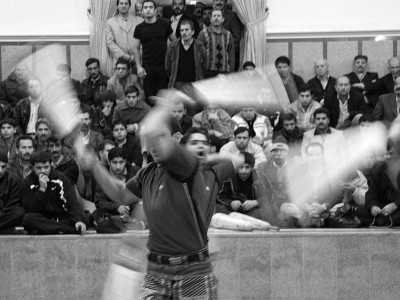
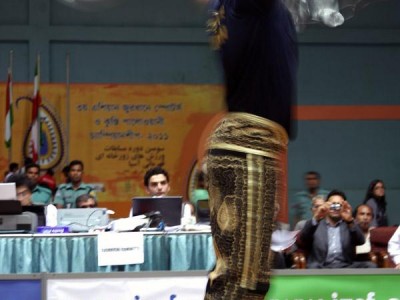
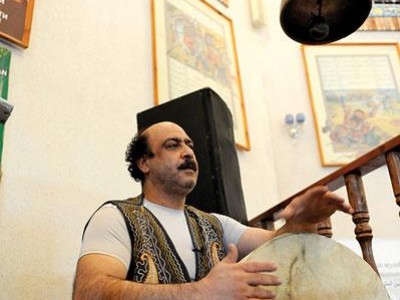
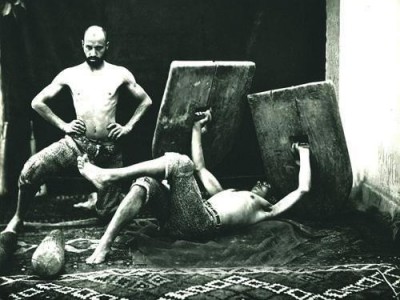






Contact Us
International Zurkhaneh Sports and Koshti Pahlavani Federation
Address: Iran, Tehran, Artesh Highway, Mini City, Naft Town, Suleiman Mosque Square, Sarai Mahalle Corner, Zorkhaneh Shahadai, Naft Town,
Postal Code: 1955673172
Contact number: 22495935
Subscribe now
Do not miss our latest news and reports.
Zorkhane is the house of strength, the ritual of hard work, cultivating the spirit of generosity, chivalry, patriotism and a combination of sports, art and politeness.
The traditional sport of Zorkhaneh is the sport of values. In its thousands of years of history, this traditional sport has played an important role in people's strength and physical and mental fitness. Zorkhane sport is a cultural and spiritual heritage and a good source for the development of public sports.
